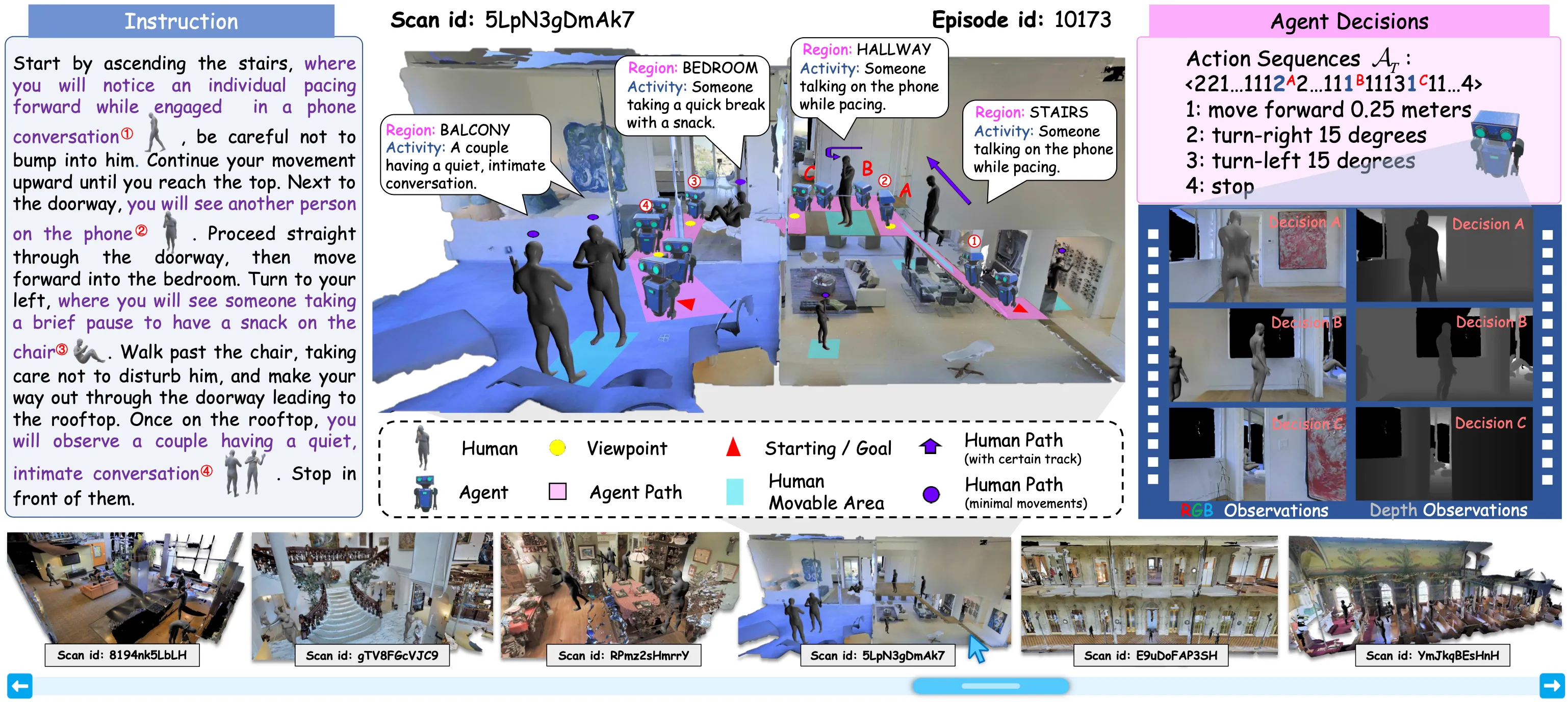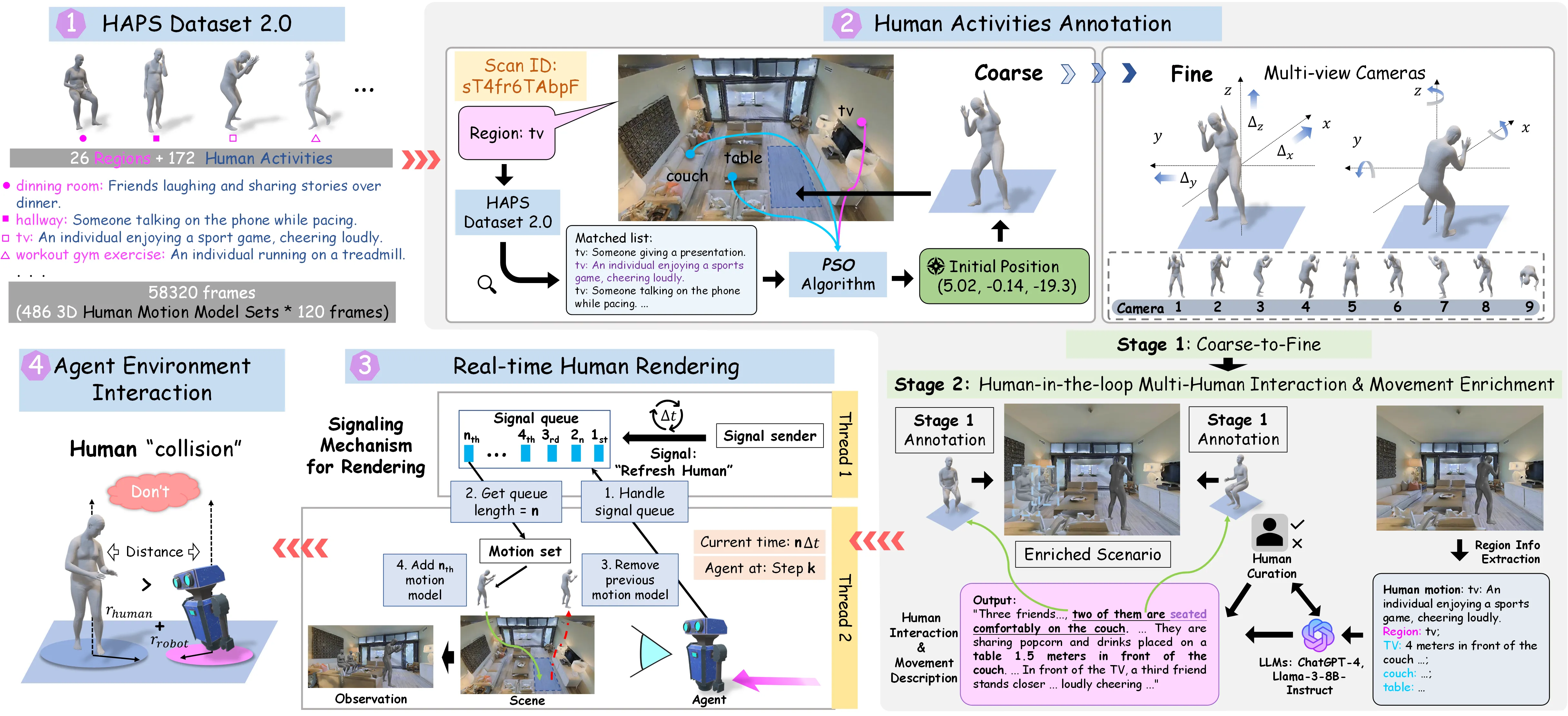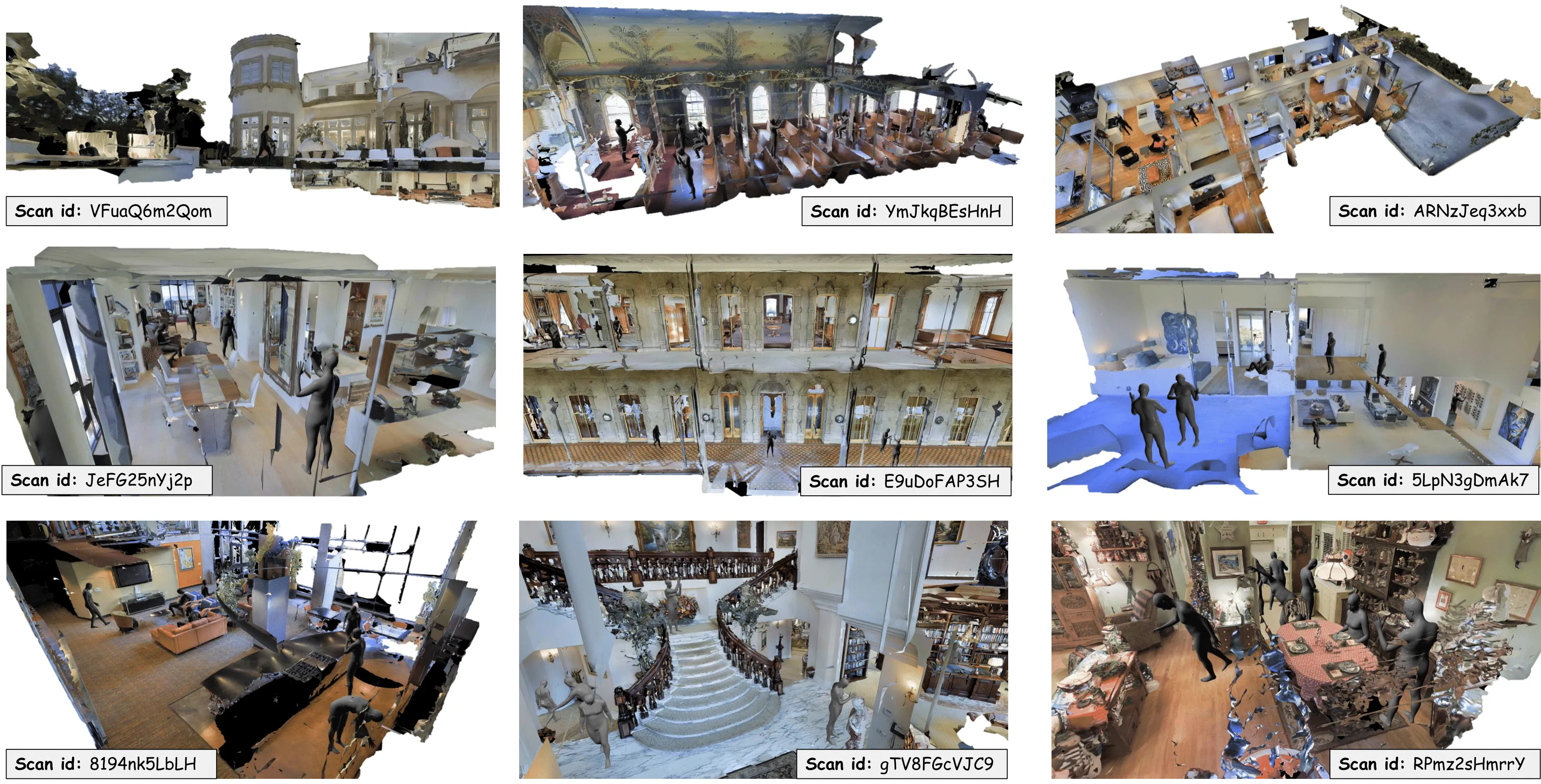
University of Washington
University of Washington
University of Washington
University of Washington
University of Washington
Galbot
University of Washington
University of Mannheim
Carnegie Mellon University
Microsoft Research
Carnegie Mellon University
*Equal contribution. Work done during internship at UW., †Corresponding author.

Vision-and-Language Navigation (VLN) has been studied mainly in either discrete or continuous settings, with little attention to dynamic, crowded environments. We present HA-VLN 2.0, a unified benchmark introducing explicit social-awareness constraints. Our contributions are: (i) a standardized task and metrics capturing both goal accuracy and personal-space adherence; (ii) HAPS 2.0 dataset and simulators modeling multi-human interactions, outdoor contexts, and finer language–motion alignment; (iii) benchmarks on 16,844 socially grounded instructions, revealing sharp performance drops of leading agents under human dynamics and partial observability; and (iv) real-world robot experiments validating sim-to-real transfer, with an open leaderboard enabling transparent comparison. Results show that explicit social modeling improves navigation robustness and reduces collisions, underscoring the necessity of human-centric approaches. By releasing datasets, simulators, baselines, and protocols, HA-VLN 2.0 provides a strong foundation for safe, socially responsible navigation research.

Overall View of Nine Annotated Scenarios from HA-VLN Simulator (90 scans in total)

Single Humans with Movements (910 humans in total)
Visualization results of agent's trajectory
@misc{dong2025havlnbenchmarkhumanawarenavigation,
title={HA-VLN: A Benchmark for Human-Aware Navigation in Discrete-Continuous Environments with Dynamic Multi-Human Interactions, Real-World Validation, and an Open Leaderboard},
author={Yifei Dong and Fengyi Wu and Qi He and Heng Li and Minghan Li and Zebang Cheng and Yuxuan Zhou and Jingdong Sun and Qi Dai and Zhi-Qi Cheng and Alexander G Hauptmann},
year={2025},
eprint={2503.14229},
archivePrefix={arXiv},
primaryClass={cs.AI},
url={https://arxiv.org/abs/2503.14229},
}